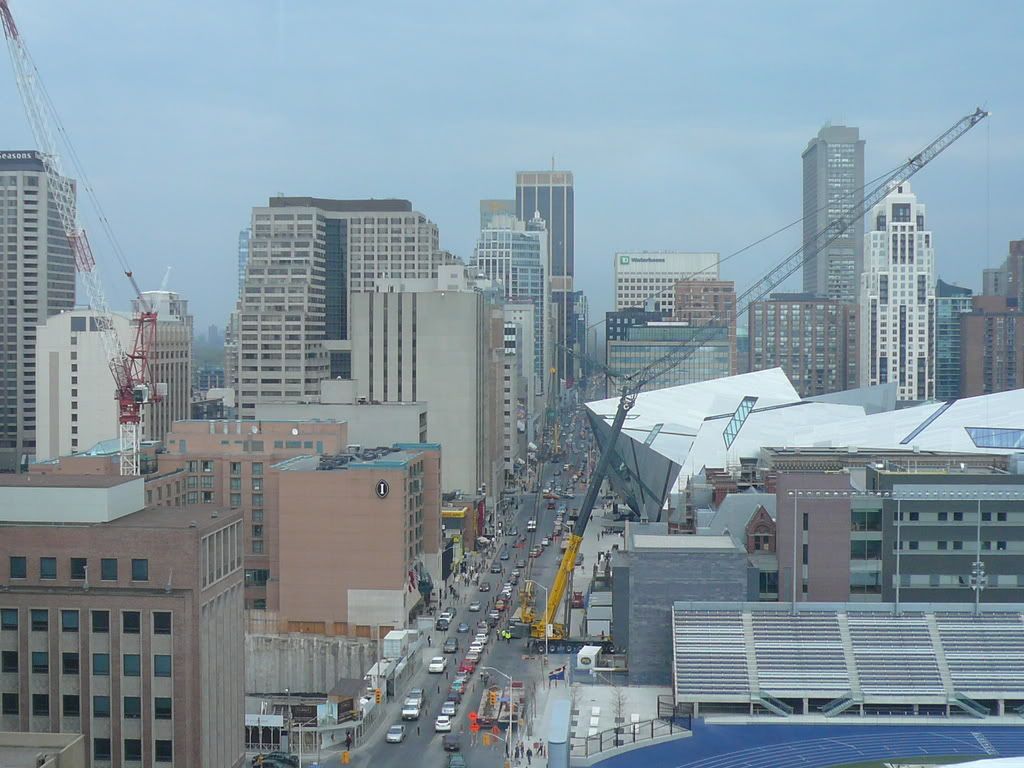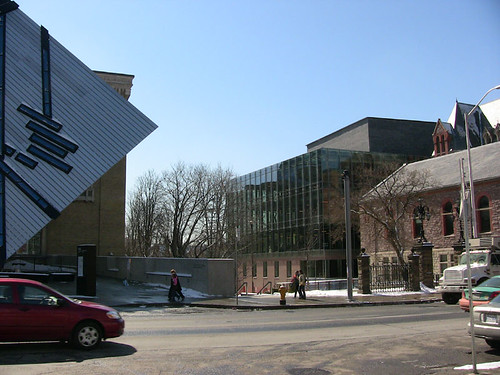And the Globe:
A sneak peak
Floods of light. A concert hall that promises to be world-class. And a home for music from classical to hip hop. Welcome to the newly renovated Royal Conservatory of Music
JAMES BRADSHAW
From Wednesday's Globe and Mail
June 4, 2008 at 4:49 AM EDT
A sneak peek at the Royal Conservatory of Music's new Toronto home yesterday offered a glimpse of a much expanded, technologically sophisticated space designed to extend the conservatory's reach from education into social change.
The Telus Centre for Performance and Learning, as the new home has been dubbed, is in the final stage of construction, with most of the main rehearsal hall and five floors of soundproof studios ready to use. Some public spaces, such as a 50-seat café in the atrium where the historic building joins the new and a display area for antique instruments, have yet to take shape.
The building's public areas offer floods of natural light as well as stunning views of the University of Toronto's Philosopher's Walk and the neighbouring Royal Ontario Museum through large windows, glass roofing and an outdoor balcony atop the south façade.
President Peter Simon said the facilities will be complete and open by September, the only exception being the 1,140-seat Koerner Hall performance space, a venue Simon hopes will be acoustically among the world's great halls, which is expected to open in September, 2009. (The $50-million second phase of the conservatory's $110-million capital campaign was launched recently under the direction of former Bank of Montreal president and chief executive officer Tony Comper and his wife, Elizabeth.)
Rebirth is the dominant theme at the conservatory, including a new slogan proclaiming that "the Finest Instrument is the Mind." Faculty, staff and students are champing at the bit to move back to Bloor Street, having been temporarily relegated to a retrofitted Toronto District School Board building for the past two years. One staff member said their second home served its purpose but was less than ideal, lacking in soundproofing and airflow among other things.
Still, Simon says they were fortunate to have found such a large site that could house them in one location. The new building also promises a crucial renewal of the historic but dilapidated conservatory building, which Simon described as "well past its prime."
Technology is paramount to Simon's stated goal of promoting a holistic vision of a society where creative activity is the domain of every person. Not only will the technology allow for cutting-edge musical composition and recording, Simon says, it also gives the conservatory the capacity to spread its programs to schools across and even outside Canada.
New offerings opening for online registration on June 9 include arts-based English-as-a-second-language classes, a children's series entitled Music Makes You Smarter, courses for seniors and professional-development courses for teachers and musicians.
A parallel stream continues offering courses in diverse forms such as traditional Chinese instruments, hip hop, jazz and rock, while introducing instruction in new media.
"What the new building has given us a chance to do is unleash or unveil a series of new programs that are more focused on people of all ages, whether young children or adults, in becoming active in creative things, and perhaps it will stimulate a rebirth of music activity by all people across the nation," Simon says.
http://www.theglobeandmail.com/servlet/story/RTGAM.20080604.wrcm04/BNStory/Entertainment/home
AoD







